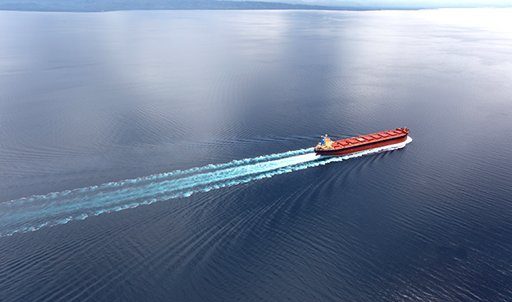Early planning is the best tool to cut contractual EEXI risks

Simon Hodgkinson, head of loss prevention at West P&I, with some useful advice to owners ahead of imminent new regulations.
EEXI rules will enter into force on the 1st November 2022. From the vessel’s following survey on or after 1st January 2023, all shipowners must have calculated the energy consumption and CO2 emissions against specific efficiency standards for vessels over 400 GT and under MARPOL Annex VI and ensure that those ships meet minimum efficiency standards at their next survey.
Rule-makers are hopeful that this will be one of the most significant new shipping regulations in years and will lead to a fundamental shift throughout the industry. By mandating that even the most reluctant owners act, it is set to create new opportunities for some shipowners in line with other landmark regulations – alongside significant new risks.
Achieving EEXI compliance
Every ship has a hard limit for compliance in its next survey date. However, owners should be cognisant of practical deadlines for class society certification of any compliance methods required to meet standards. Therefore, owners must do their EEXI calculations well before their next survey to give them the time to plan, organise, and execute any changes they need to make – and most will need to make changes.
Shipowners seeking to install new green technology as a compliance method have a very tight timeline unless they already have advanced plans. Planning and dry dock times will usually push six months and are frequently subject to delays.
Most owners, though, are set to limit engine power to achieve compliance; cutting out the expense of dry docks and creating a simpler compliance timeline will usually be the easiest way to meet the standards.
The speed reductions associated with limiting power will usually be manageable, and they will also be tangible. But, at the same time, power limiters require installation – and we expect to see a peak in demand that could stretch capacity and even cause delays for software-based solutions.
The EEXI contract risk
Shipowners are responsible for meeting EEXI standards under regulations, while charterers are merely bound by contracts. This creates a situation whereby a shipowner can breach a contract through their chosen EEXI compliance method and be left liable for damage caused to a charterer.
This will be a particular risk for ships on long-term charters. If a vessel’s published statistics are used by the parties to reach an agreement, provide one figure for speed, or another parameter is altered by a compliance method. In that case, a shipowner could be in breach of their contract.
Where shipowners have not yet calculated EEXI figures or planned for compliance, that risk extends to medium-term or short-term charters fixed before a ship’s 2023 survey.
Mitigating risk
The best tool a shipowner can have is information. Therefore, shipowners should find out their EEXI scores as soon as possible. Thankfully this calculation should be a relatively simple task for a shipowner, as most classification societies now offering online tools that will work for most ships – and most ships built after 2015 will already have an equivalent and compliant EEDI rating.
If alterations are required in order to comply with vessel’s specific EEXI rating, there is time to plan, in terms of calculating what actions they need to take, as well as securing equipment and optimising their cash flow around upgrade requirements. Knowing early will also help owners to avoid bottlenecks – whether that is by installing equipment early, or by contracting in advance with providers.
Once this work is done, it is crucial that shipowners review their contracts. Where speed is an issue within these agreements, it is important to work closely and collaboratively with stakeholders – including charterers – to find a solution that meets EEXI standards while causing minimal disruption.
For new contracts, it is essential to cover your bases today. This can be done by inserting clauses in agreements that exclude liability if the vessel’s speed changes due to EEXI compliance; BIMCO has recently formulated an applicable template clause that can help in these cases. In addition, once a vessel is compliant, future contractual issues can be avoided by ensuring that a vessel’s published statistics are up to date.
Most importantly, any shipowner should contact their P&I Club’s Loss Prevention department if they experience any additional EEXI challenges. At West, our Loss Prevention department is led by former seafarers, engineers and subject matter experts giving actionable guidance on cutting risks for their vessel.
This can include providing immediate practical guidance to crews and operational teams seeking to comply with new rules, advice on new technologies and risk mitigation processes that should go alongside them, and bespoke advice on complex contractual issues associated with EEXI.
Knowledge is a shipowner’s best friend, and owners that do not yet know their EEXI scores should find out as soon as possible. The only way to guarantee a smooth compliance journey as possible is to use this information to start planning now – and to contact Loss Prevention with any issues that arise.
